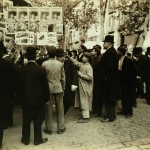
The first kiosks were built in Barcelona in the mid-19th century, either to sell products or shelter musical performances. However, the first newspaper kiosk was the initiative of an evening paper born in 1888: El Noticiero Universal. From La Rambla, newspaper kiosks spread throughout the city.
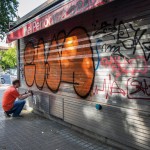
The last few years haven’t been kind to sellers of printed press. Over the course of a decade, 35% of kiosks in Barcelona have closed. The recession –and, above all, new ways of getting information– are causing many to shut down. Aware of the problem, the sector and the administration are taking on a necessary reconversion.
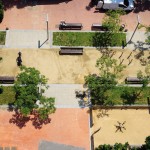
There are about 50 interior gardens open to the public in the Eixample. And in each block interior we find this reduced microcosm, each with its own particularities and features. But they all have certain things in common: spaces for leisure use, their imitation of nature and their perceptual isolation, which facilitates neighbourhood socialising.

Climate change and air pollution have driven the world’s great cities towards a change in paradigm. After a century of cars ruling the streets, the largest metropolises are starting to restrict their use.

Officially, science was a man’s affair in Barcelona until very recently. This can be seen, for example, in the gallery of names of illustrious academics in the Paranimf of the University of Barcelona, which only includes one woman: 17th-century philosopher Juliana Morell. However, if we look under the surface, we find that women have in fact been involved in the scientific and technical life of the city in many different ways.
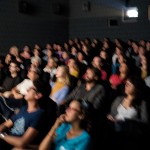
From the 70´s, the historical establishments – neighbourhood cinemas and other, classier, first – run downtown cinemas – came up time and again against the challenge of survival. Throughout this struggle, and over and above the overpowering creeping commercialism, alternative circuits have been established that have allowed new experiences for cinema-lovers while preserving the best of the traditional ones.

In Catalonia, 7% of all food purchased by families, restaurants and shops each year is wasted. Food waste is a global problem which can be fought by means of better laws and social projects, in addition to individual and household initiatives.
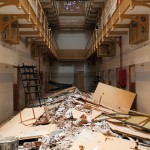
The Model prison has since been emptied of its prisoners. Now, for the residents in this part of the city, it represents both an opportunity and a danger, as they watch to see what sort of restoration will be given to this large chunk of their neighbourhood, following four decades of calls for the prison’s closure in order to make way for amenities, green spaces and schools.
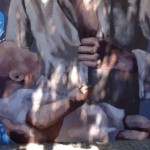
Arantxa Berganzo i Ràfols
Since the appearance of the first graffiti in the mid-1980s, Barcelona has had a rather tempestuous relationship with this new form of artistic expression in its public space. There are three main characters in this story: the artists, the authorities and the public. In the following pages we will analyse how their relationship has evolved over the last three decades.
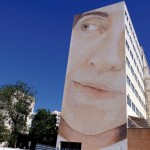
Arantxa Berganzo i Ràfols
The legacy of Barcelona’s artists, some of whom have achieved wide renown, has been enriched by contributions from high profile artists from around the world.
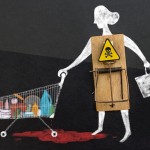
There is a form of pollution that is more subtle and invisible than that of air or water. It’s inside the human body. Endocrine disruptors are substances found in food, household and office items, cleaning products, cosmetics, etc., which all build up in the body. The scientific evidence is solid, but most governments look away. Nevertheless, the European Commission has missed all the deadlines for restricting disruptors.

A number of simple, tried and tested rules can reduce a typical city-dweller’s exposure to hormone disrupters.
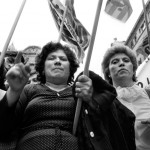
() Les narratives històriques sorgides de la Transició de vegades han ignorat el paper dels moviments socials i, més encara, el pes de les dones en les lluites veïnals i obreres. Les quatres històries de vida que presentem exemplifiquen la invisibilització de la dona combativa per pertànyer a la classe treballadora, per ser dones i, en el seu cas, a més, per ser migrants.
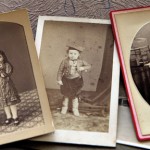
Barcelona’s is a city with one of the most important photographic heritages of any city in Europe. Public and private archives, antique dealers and collectors, journalists and historians, publishing houses and, in particular, families themselves are all part of the system that makes it possible to preserve and disseminate this valuable documentary heritage.
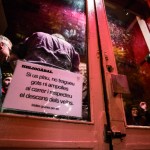
() L’Ajuntament va aprovar fa uns mesos un nou marc normatiu per permetre a bars, cafeteries i restaurants programar música amplificada en directe sempre que s’atinguin a uns requisits de seguretat i a un control estricte del nivell sonor. És l’avançament d’un ambiciós pla per impulsar el circuit de la música en viu de petit format, a partir del reconeixement del valor cultural i social d’aquesta oferta de lleure.
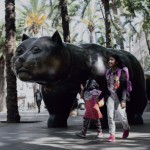
Catalina Gayà i Laia Seró
Barcelona is currently the scene of a battle between its exportable symbols, the ones that make it a consumer product, and its communitarian symbols, which are threatened with extinction due to from the impact of tourism. A colonial past and international image also play a part in the debate.
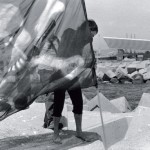
Catalina Gayà i Laia Seró
Photography as a language of portrayal cannot be decoupled from a city’s symbols: neither the image it projects to the outside world nor the image that the public builds of its own city through the media. The exhibition ‘Barcelona. The metropolis in the age of photography’ becomes a history of the self-portrayal of Barcelona.

Catalina Gayà i Laia Seró
Barcelona is experiencing a blossoming of group initiatives and citizen selfmanagement. This begs the question of whether these initiatives are replacing the obligations of the public administration.
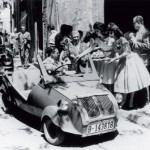
Under the prohibitions of the dictatorship, new cultural codes were forged that finally came to full fruition after the death of Franco and the return to democracy. The pioneers of the 1950s laid the foundations for this cultural boom.

During his internal exile in Madrid, Agustí Calvet prepared two anthologies of articles written after the First World War, one on Catalan politics that was published recently, and another on Barcelona, still unpublished. These articles reveal a city turning from a provincial capital into a great metropolis.
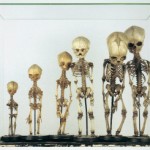
If you ask anyone from Barcelona if they know about the city’s Museu Roca, the answer will be no. After the war, it faded into the shadows of an old warehouse on Paral·lel without a trace. It is only now that we are able to evoke the history of this anatomical and fair phenomena museum, which had been active during the 1920s and 30s.
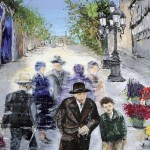
The Musketeers, the ghosts that help you to be yourself, to mark your own territory, to live in it, are not one, or two, or three, like the three musketeers (of which there were four): they are countless. What matters
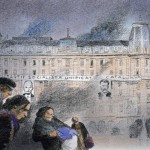
When Franco’s forces crossed the River Ebro, everyone believed that the Civil War was lost. In accordance with the scorched earth policy ordered by Moscow, the Communists decided to destroy everything that was still under their control. In Barcelona they planned to blow up factories, roads, underground train tunnels, energy supply points and drinking water pipes. The city was saved at the eleventh hour because the plan was sabotaged by the leader who was supposed to carry it out, Miquel Serra i Pàmies.

























